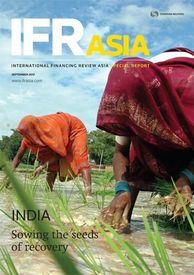Light in the gloom
India’s growth is stalling, the rupee is sliding and elections are looming, but there is still room for optimism.

Source: Reuters/Jitendra Prakash Indian women plant rice plants in their field in Malaka, in the northern Indian city of Allahabad. This year’s India report comes at an especially challenging time for the world’s second most populous nation. The near-20% slump in the rupee is the most obvious symptom of the crisis of confidence buffeting the country, and also one that risks making things worse by eroding unhedged balance sheets and importing inflation. Comparisons with India’s balance-of-payments crisis in the early 1990s are becoming more...Read more
To purchase printed copies or a PDF of this report, please email leonie.welss@lseg.com and shahid.hamid@lseg.com
India’s growth is stalling, the rupee is sliding and elections are looming, but there is still room for optimism.
India’s business leaders are fighting for new banking licences even as more foreign institutions are withdrawing. Does the country’s banking sector have any real appeal?
IFR presents 10 recommendations to help India put its economy and its investment appeal back on track.
Growing volumes and boundless innovation promise a bright future for the rupee bond market, but convincing institutional investors to take on credit risk will be crucial if it is to reach its full potential.
After the boom times that catapulted Indian banks to the top of the global project-finance table, a series of bust concessions has rocked the country’s related market. Restoring confidence among infrastructure financiers has never been more important.
Tax changes and low rates lured more Indian issuers to the offshore bond markets earlier this year, before a global risk reversal put a stop to it. Investors are now waiting for stability before markets reopen fully.
The safety net provision in recent Indian IPOs points to a determined bid to draw retail investors back to the market. However, even the controversial buyback scheme has failed to prevent a slowdown in new listings.
Amid declining overseas loan volumes, standby letters of credit have provided some welcome relief for Indian bankers in the past 12 months.
After its ambitious acquisition of European rival Corus more than five years ago, Tata Steel’s latest debt market outing has underlined the availability of local financing for even the biggest Indian projects.
Ravi Mathur, head of the Department of Disinvestment, has met the needs of both the capital markets and public sector unions to increase proceeds from share sales.